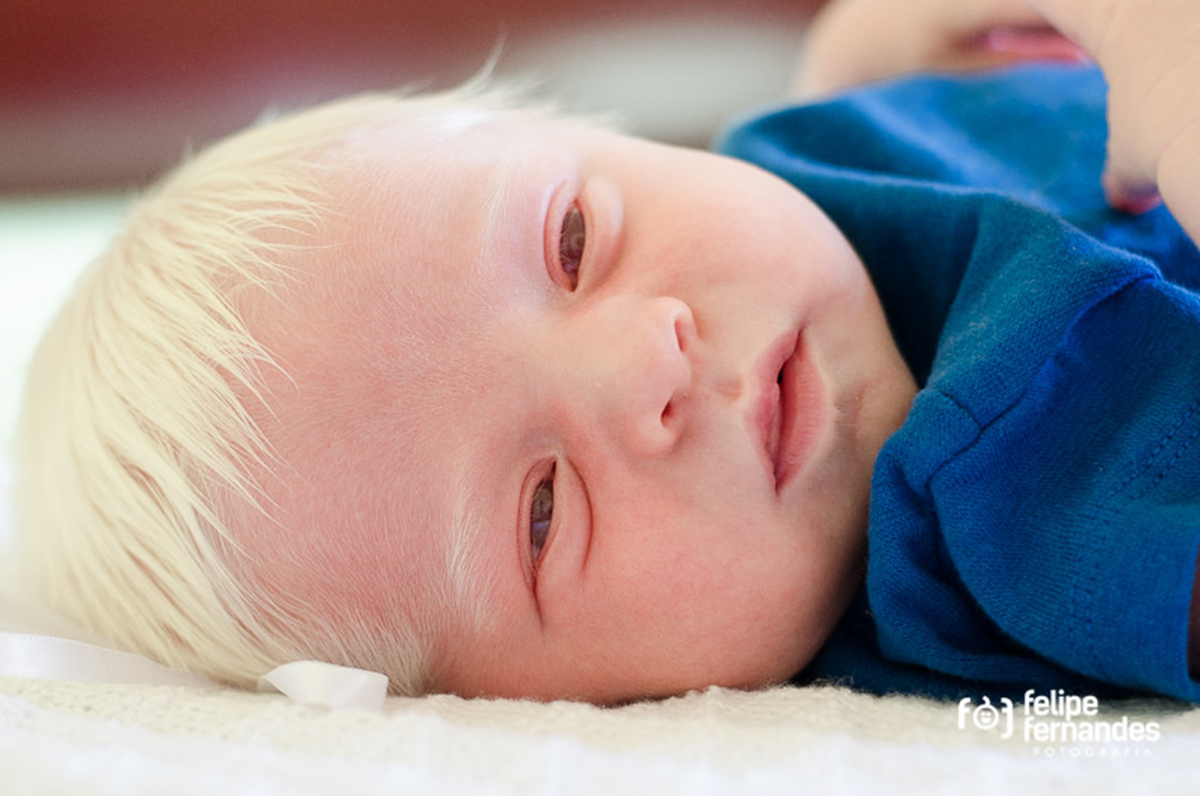Table of Contents
Signs and Symptoms of Albinism
Although the color and location of the albinism can vary, the following is a list of associated signs and symptoms that may be present:
- Lack or absence of color in the skin, hair or eyes
- Patches of color missing from the skin
- Lighter than usual hair and skin
- Strabismus (crossed eyes)
- Photophobia
- Functional blindness
- Visual impairment
- Rapid eye movements

The Eyes
Many people think that those with albinism have pink or red eyes, but this is purely a myth. This could be due to certain lighting causing the blood vessels behind the eye to show through, giving them a reddish hue. In fact, most people with albinism have blue eyes, and others can have brown or hazel eyes, depending on the type of albinism.
Treatment for some of the visual defects often involves visual rehabilitation. Problems such as strabismus can be surgically corrected, but it won’t fix the nerve connections between the eye and the brain. Crossed eyes and nystagmus can also be corrected by surgery, but this is more to do with fixing the appearance of the eyes rather than the functionality.
Often reading or seeing glasses will be required, and these may range from regular single lens glasses, to bifocals, or even sometimes glasses with small telescopes attached to their lenses. Due to the low pigment of the iris, albinos are also sensitive to light, and most will need to wear eye protection such as sunglasses when they are outside. They will also require lighting inside to be positioned behind them to prevent glare.
The Skin
Just like everyone else, though perhaps more so, those with albinism need to take extra care of their skin when they are exposed to sunlight. This means that the use of a good quality sunscreen is imperative, and in some cases, keeping the skin covered at all times is necessary. They are more likely to suffer from sunburn and the potential for skin cancer is high given the fairness of their skin.
READ Ocular Albinism Symptoms and Treatment
Social Environment
For centuries, people with albinism have often been treated differently in their social environment because they look different. In some cultures, they were considered to be deathly, due to the whiteness of their skin and hair. A lot of this misunderstanding continues today and sometimes people with albinism are shunned by their peers. Being involved with a support group is useful, and schools are encouraged to support their students with albinism to ensure they bond well with the rest of the students.
Long Term Prognosis
A diagnosis of albinism does not result in a shortened life span. In fact, with a few precautions and visual aids, they can live long, normal and happy lives.
- www.albinism.org/site/c.flKYIdOUIhJ4H/b.9253761/k.24EE/Information_Bulletin__What_is_Albinism.htm
- www.nlm.nih.gov/medlineplus/ency/article/001479.htm
- Photo courtesy of felipefdesign: www.flickr.com/photos/felipefdesign/12180226014/
- Photo courtesy of felipefdesign: www.flickr.com/photos/felipefdesign/12180226014/
- Photo courtesy of felipefdesign: www.flickr.com/photos/felipefdesign/12180245004/


Your thoughts on this